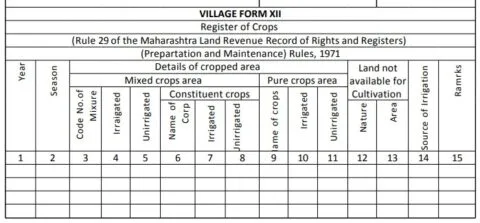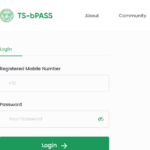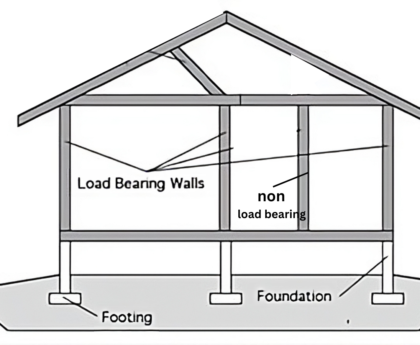7/12 Extract in India: Land Ownership Document
Table of Contents
ToggleKey Details in a 7/12 Extract document:
Land Ownership:
It identifies the current owner or owners of the land.
Land Classification:
The document classifies the land based on its agricultural or non-agricultural status.
Survey Number:
Each piece of land is assigned a unique survey number for identification purposes.
Area of Land:
The extract provides information about the total area of the land, including details of cultivable and non-cultivable land.
Type of Crops:
It may contain information about the type of crops grown on the land.
Land Usage:
This section indicates whether the land is irrigated or rain-fed and the source of irrigation.
Liabilities and Encumbrances:
Any pending land revenue payments or encumbrances on the land are usually mentioned.
Significance of the 7/12 Extract document:
The 7/12 extract is an important document when it comes to verifying land ownership and land-related transactions, especially in rural and agricultural areas of India. It is often required during property transactions, loan applications, and for resolving land-related disputes. Buyers, sellers, and landowners refer to the 7/12 extract to ensure that the land’s ownership and legal status are clear before any land-related transactions take place. This also serves as a valuable record for revenue authorities and government agencies to maintain accurate and up-to-date information about land holdings.
Roles of the 7/12 Extract document:
Property Transactions:
During the buying or selling of agricultural land, the 7/12 extract is essential to confirm the current ownership and understand any existing liabilities on the land.
Loan Applications:
Financial institutions often require the 7/12 extract as part of the documentation when individuals apply for loans using their agricultural land as collateral.
Dispute Resolution:
In cases of land disputes or conflicts, the 7/12 extract serves as a primary reference document to establish ownership and land usage.
Government Planning:
Authorities use the data from 7/12 extracts for land-use planning, agricultural policy formulation, and maintaining accurate land records.
Agricultural Practices:
Farmers refer to the extract for information on land classification, area details, and types of crops that can be cultivated, aiding in informed agricultural practices.
Legal Proceedings:
The document is crucial in legal proceedings related to land, providing an official record of ownership and land characteristics.
Inheritance and Succession:
The 7/12 extract is consulted during matters of inheritance to determine rightful heirs and facilitate the transfer of land ownership.
By encapsulating vital information about land, the 7/12 extract contributes to transparency, reduces the risk of fraudulent transactions, and supports the overall management of land-related matters in India. It is an indispensable tool for various stakeholders involved in land administration and transactions.
to know more 7/12 extract document , visit :https://bhulekh.mahabhumi.gov.in/Amravati/Home.aspx let also dive in to MAHA Bhulekh website
Overview:
Mahabhulekh is an e-governance initiative by the Maharashtra state government, streamlining land record systems and providing citizens easy access to essential information like 7/12 Utara.
Key Features:
Land Records Access:
- Citizens can effortlessly access their 7/12 Utara online, eliminating the need for physical visits to government offices.
- Crucial information on maps, records, Khatauni number, Khewat number, Khasra number, and more is available on the portal.
Digital Transformation:
Mahabhulekh represents a shift toward e-governance, reducing paperwork and offering convenience to citizens.
Elimination of Office Visits:
Mahabhulekh allows citizens to avoid time-consuming and cumbersome visits to Patwarakhandas and government offices.
Uniform Naming System:
Bhulekh has different names in different states but it is used for standard naming of land records such as Jamabandi, Khasra Khatauni, Records, Land details farm papers, and farm Maps.
How to Access 7/12 Utara Online:
- Visit the Mahabhulekh Portal:
To start, one can access the Mahabhulekh online portal.
- Navigate to 7/12 Utara Section:
Locate and access the specialized page for the 7/12 Utara.
- Enter Land Details:
Give relevant land information to obtain the 7/12 utara.
- Digital Form Availability:
Give citizens convenient access to the 7/12 Utara digitally so that they can store and use the data.
Conclusion:
It will be remembered that the Mahabhulekh is an innovative project by the Maharashtra Government which makes it easier for people to register their properties. The portal is also imperative as it offers important messages for the citizens and is part of the general transformation of governance to the digital era. This brings an easy way through which residents can control and retrieve their land records showing that the country has advanced towards efficiency and transparency in land administration.
Disclaimer: Regulations and policies may change over time, so readers are encouraged to verify the current status of Maha bhuklekh website
If you’re planning to start your dream project, let us make your dream come true. Visit our online catalog on building construction materials.MAHA Bhulekh





